If there’s one car that can be considered as the king of reinvention, it’s the Hyundai Santa Fe. In the five generations it’s been around, each one feels like a complete re-think of the one before; it’s made even more obvious when you start putting them side-by-side. The latest one, codenamed MX5 (no relation to the Mazda sportscar), is the most striking one yet. But with a price tag that’s as head-turning as its looks—P 3.3-million—can the Santa Fe Hybrid live up to the hype?
Straight to the point, you can’t get a diesel anymore with the newest Santa Fe. Instead, it gains the services of three kinds of 4-cylinder gasoline engines capped off by the turbocharged and electrified 1.6-liter Smartstream G. In terms of max numbers, this one’s pretty impressive—235 horsepower and 367 Nm of torque. Broken down, 180 horsepower and 265 Nm comes from the combustion engine, but just 65 horsepower and 264 Nm are contributed by the electric motor.
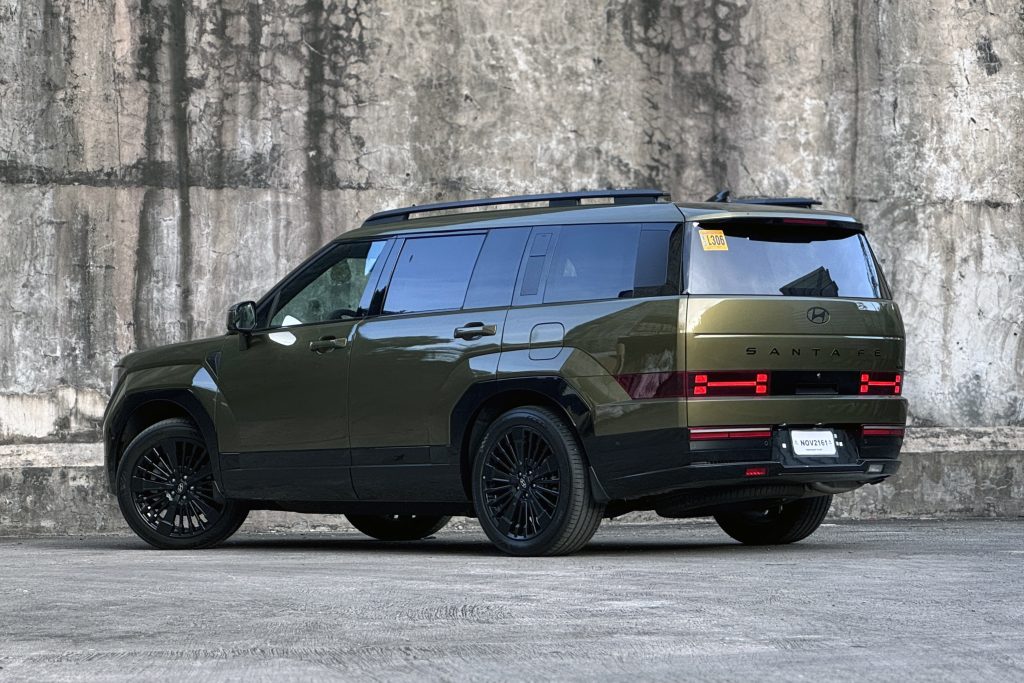
Hyundai’s decision to outfit the Santa Fe Hybrid with a modestly-powered electric motor already tells you something when it comes to its power delivery and efficiency. As far as hybrids go, it’s not the most efficient system out there; neither does it offer the same low-end grunt and oomph associated with hybrids or EVs. True enough, its 9-ish-second century sprint is nothing to write home about. Equally, its fuel economy—12.65 km/L—is good, but nowhere as high as other hybrids equipped with stronger electric motors.
Instead, Hyundai engineers have gone for everyday usability. By installing the electric motor between the gas engine and transmission, it’s able to provide electric drive through all six gears. Keep an eye on the digital rev gauge and you’ll see the revs rise and fall as with a conventional automatic. Lift off or prod the gas pedal gently, and it switches over to electric drive completely—even at speeds up to 80 km/h. The switchover between modes is smooth and hardly noticeable. In its non-Sport modes, the paddle shifters control the regen braking levels, as it does in the Ioniq 5 and 6; in Sport, it controls the six-speed automatic.
Despite its boxy appearance, the Santa Fe is easy to drive. The steering is accurate, well-weighted, and has progressive action. Roll and pitch are also well-contained with good amounts of grip in all but very tight bends. It isn’t a sporty SUV, but it’s still pretty composed for a massive, family-oriented one. Wind and road noise are also well-controlled and this makes the Santa Fe Hybrid a worthy long-distance driving companion. Onto the ride, it’s smooth and planted, but it can get busy at times. It’s not too bothersome, but there’s some secondary shimmy coming from the big, heavy wheels. There are also some audible thumps—a constant reminder of its 2.1-ton curb weight.
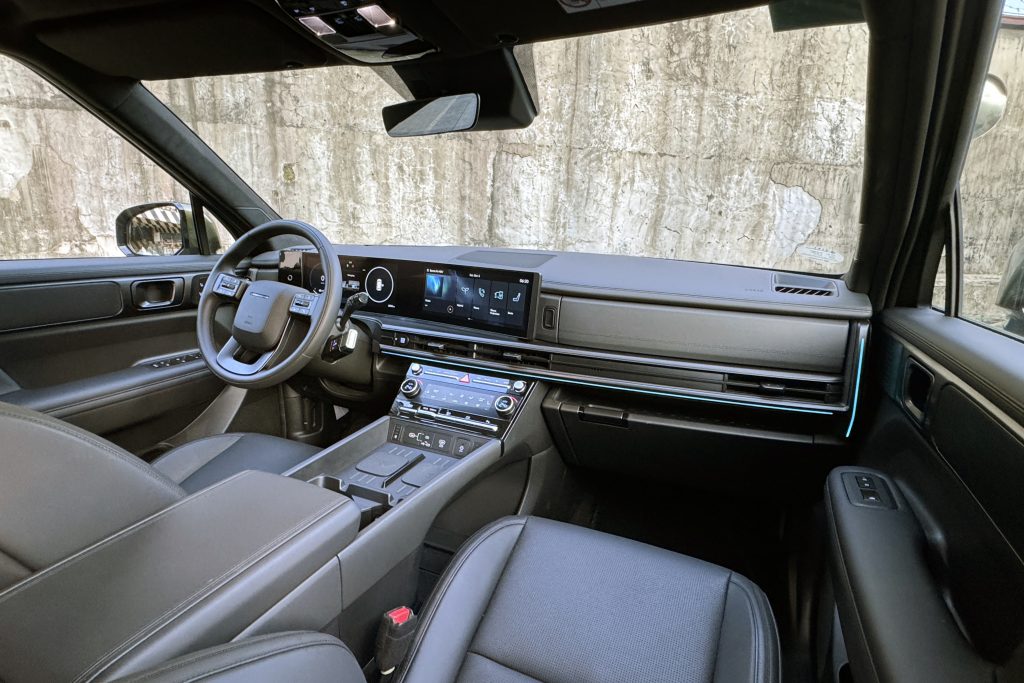
Will it off-road? Its 177 mm ground clearance and pavement-oriented setup say otherwise, but it probably can, through light trails thanks to its electronically-controlled all-wheel drive system. It also has switchable drive modes for Snow, Sand, and Mud.
As far as designs go, this fifth-generation Santa Fe is polarizing. The styling overexaggerates its size and despite its manageable footprint—4,830 mm in length, 1,900 mm in width, and 1,770 mm in height—it looks like a larger SUV than it really is. Oh, and love for the letter, ‘H’ is mandatory too, since it’s a repeating motif here, especially in the lights.
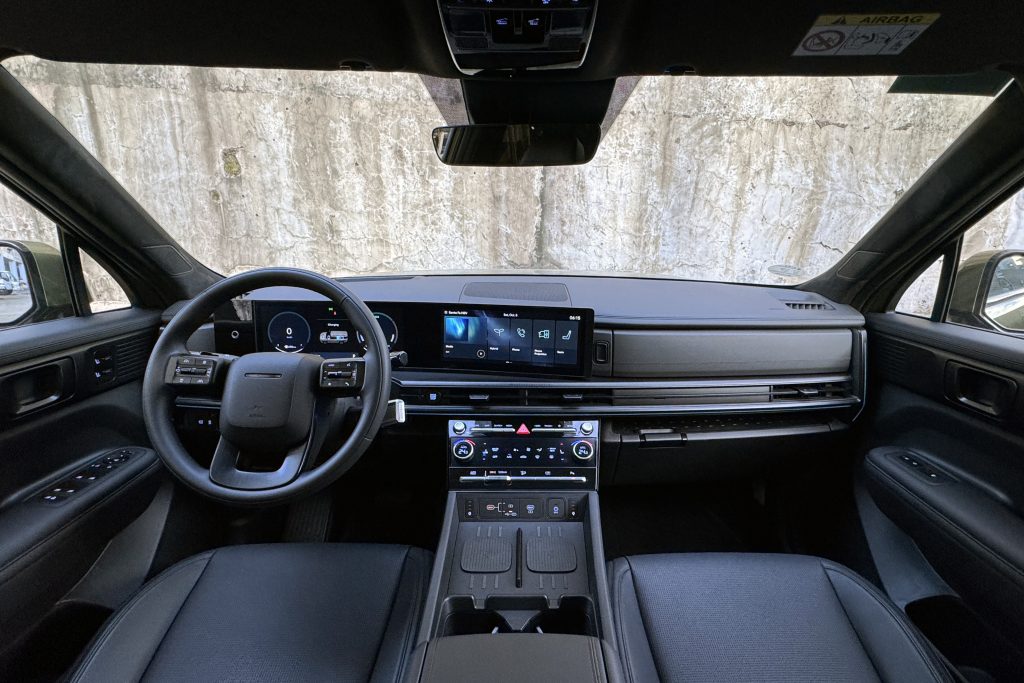
The square shape is deliberate as Hyundai wants to free up as much interior space as they can and for the most part, it worked. For the first two rows and in terms of cargo, it’s spectacularly practical, spacious, and well-thought out.
Things start with the easy ingress thanks to the wide-opening doors and low step-in height. The second-row seats—individually reclining and sliding captain’s chairs—are comfy. Still, it’s weird that for the price, the adjustment here is only partially electric with only the recline and height getting motorized assistance. Once aboard, there’s plenty of head- and legroom to go around. The absence of a center console feels like a minus, but it does offer quick and easy movement to and from the third-row.
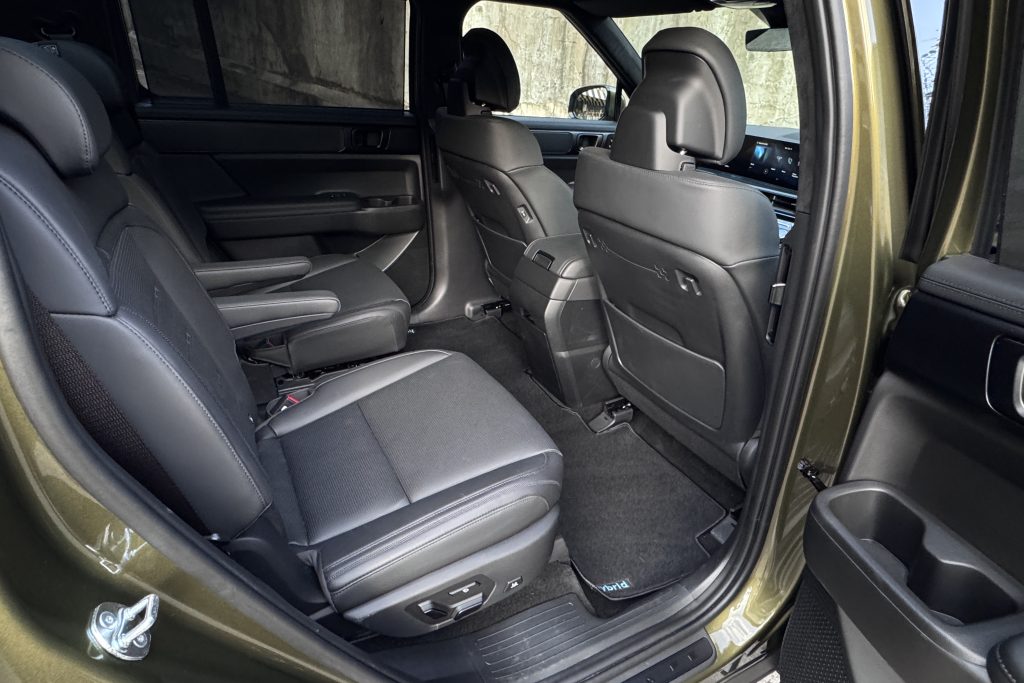
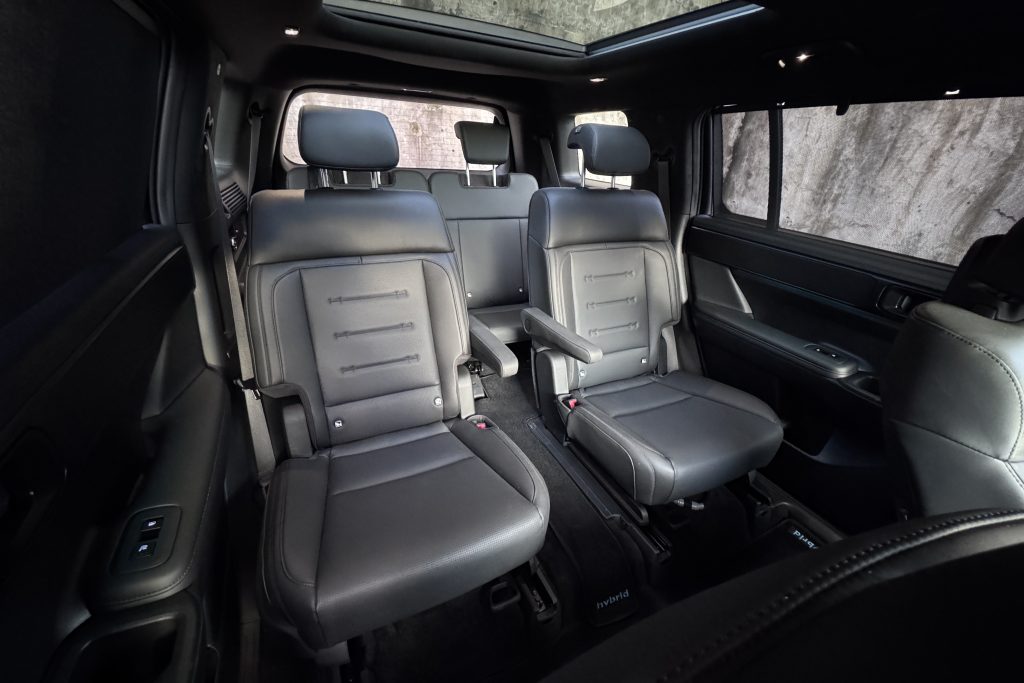
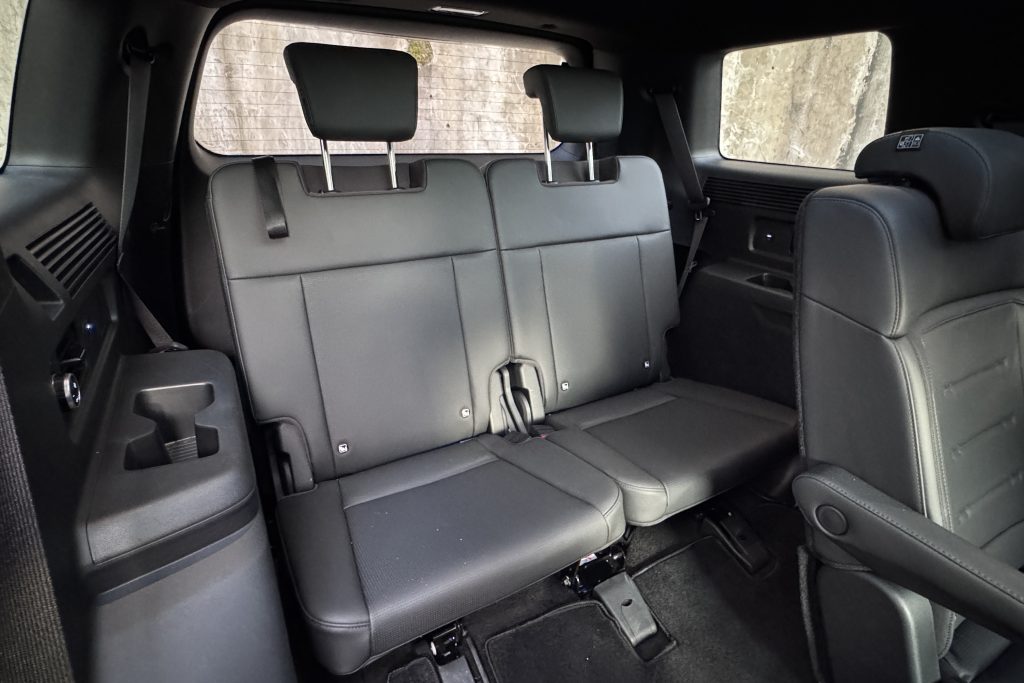
Speaking about the third-row, getting in and out is easy thanks to a clever one-button mechanism. Pressing it on the second-row seatback automatically reclines and slides the seat fully forward. Pulling the seat back and pressing the same button returns it to its previous position (recline-wise), while splitting the knee room equally between the second- and third-row. A closer inspection reveals it’s a clever piece of engineering where the seat cushion’s made to detach with the seatback for additional levels of recline. As for the available room, the boxy exterior successfully frees some headroom, although when it comes to knee room, it’s good, but not stellar.
The seatbacks at the rearmost position offer degrees of recline too, meaning that at its most upright, there’s usable space for luggage or grocery. Flip the third row down and it grows to a ginormous 725-liter space. On top of that, the opening is low and wide, which makes hauling things in and out very simple. Oh, and for those who plan to use the roof, the rails are load rated and there are built-in handles on the side trim so you can pull yourself up to reach it.
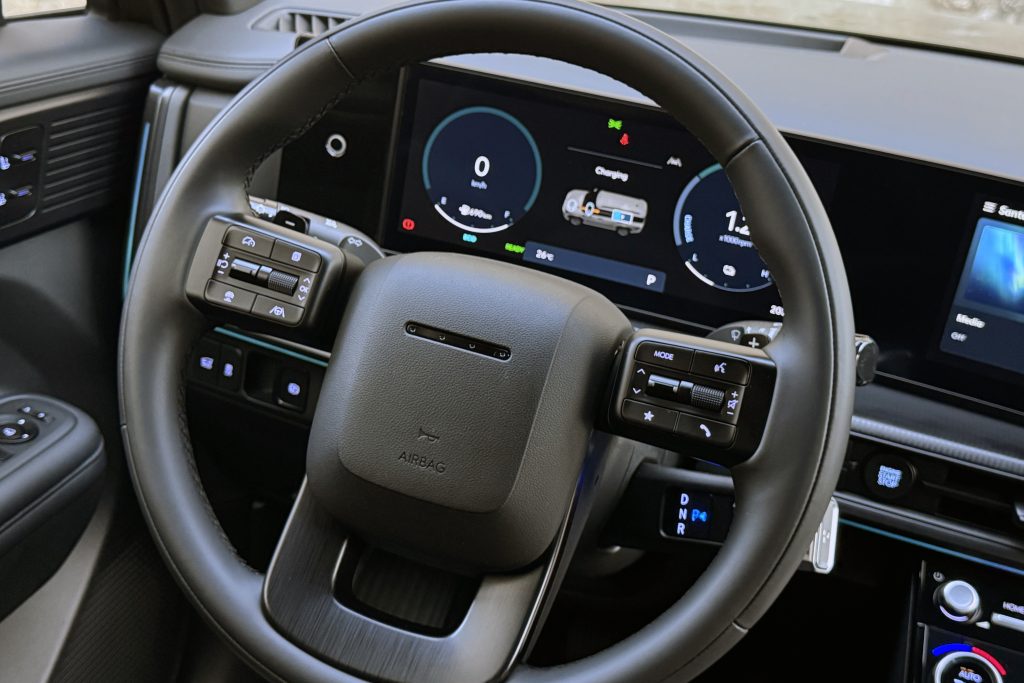
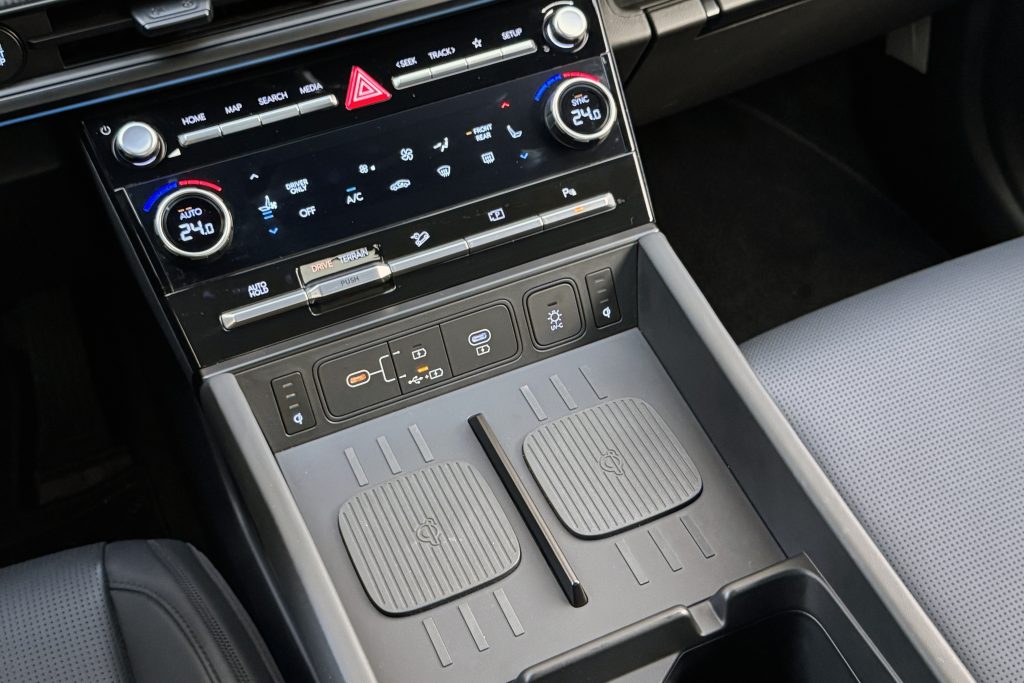
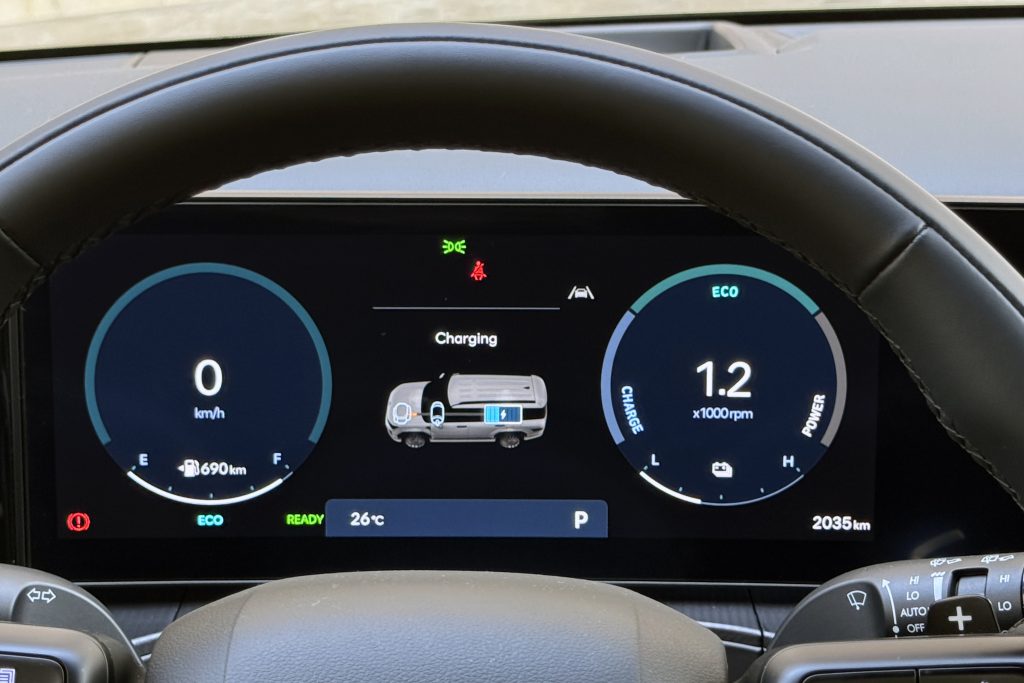
Looking nothing like the previous generation model’s interior, some have commented that it bears a strong resemblance to a Land Rover Defender; you can’t blame them. Build quality is fantastic and thanks to solid controls and the use of upscale materials like Nappa leather and a suede headliner, it has a plush look and feel. The driver sits high and there’s plenty of adjustment to go around for both the seats and steering wheel. Visibility is a huge plus in all directions even with the chunky rear pillars. The gear selector is a large, rectangular stalk on the steering column. It’s a package lesson Hyundai’s learned on their EVs and this frees up even more space on the double decker center console. Speaking of the center console, that front center armrest is clever. Its dual hinge design means it can be used by people in the front or middle rows.
The Santa Fe’s also a technical tour-de-force that starts with its twin 12.3-inch screens—one serving as a driver display and other as a touchscreen for the infotainment. Like the local market Ioniq 5 N, it uses the ccNC system which presents everything in sharp, easy-to-read tiles. The menus are not more than two levels deep, and the responses are snappy. Wireless Apple CarPlay and Android Auto are also standard, with not just one, but two wireless chargers located on the center console.
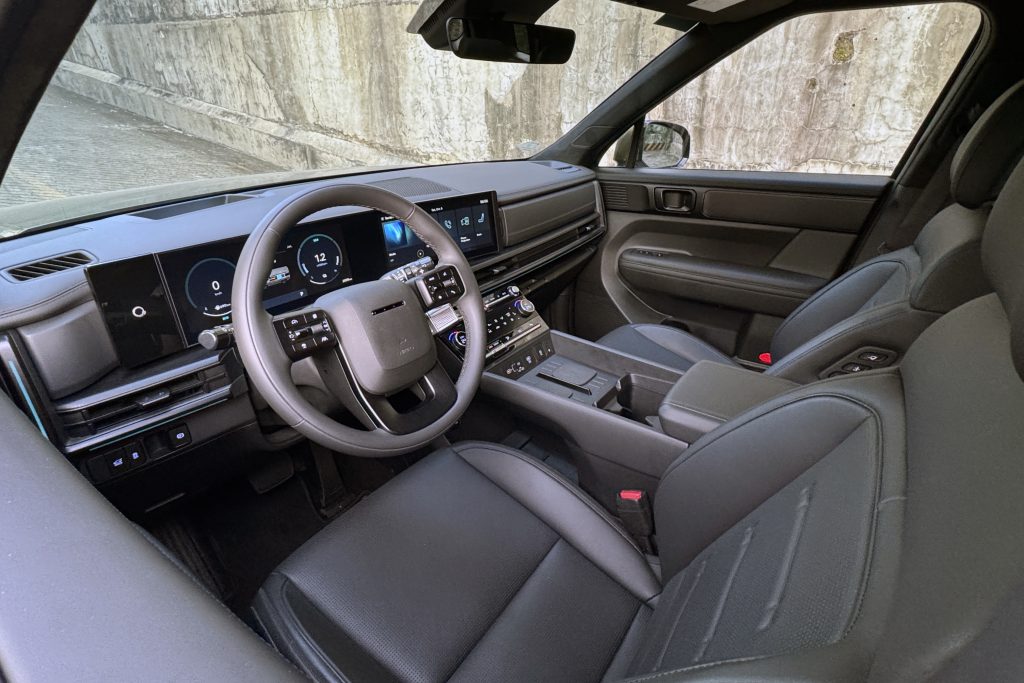
There’s a separate 6.6-inch screen lower down on the dashboard permanently displaying the climate controls. Because they use touch-sensitive buttons, it’s hard to navigate by feel, but at least they’re always where you expect them to be, as opposed to being a menu buried in the infotainment screen. Also, at least there are two large dials on either side. Below it is extra physical switches for the Drive/Terrain mode, Auto Hold, Parking Sensors, and 360-degree Camera. Other tech found include a finger-print access system, vented and heated seats, memory settings for the driver, and a unique UV-C sterilizer.
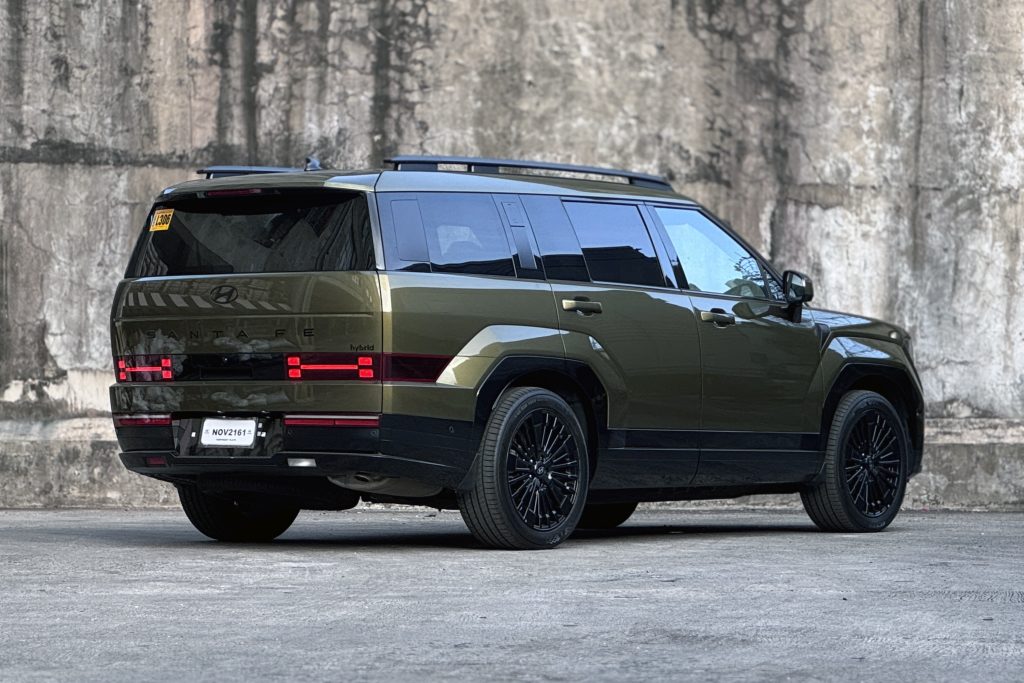
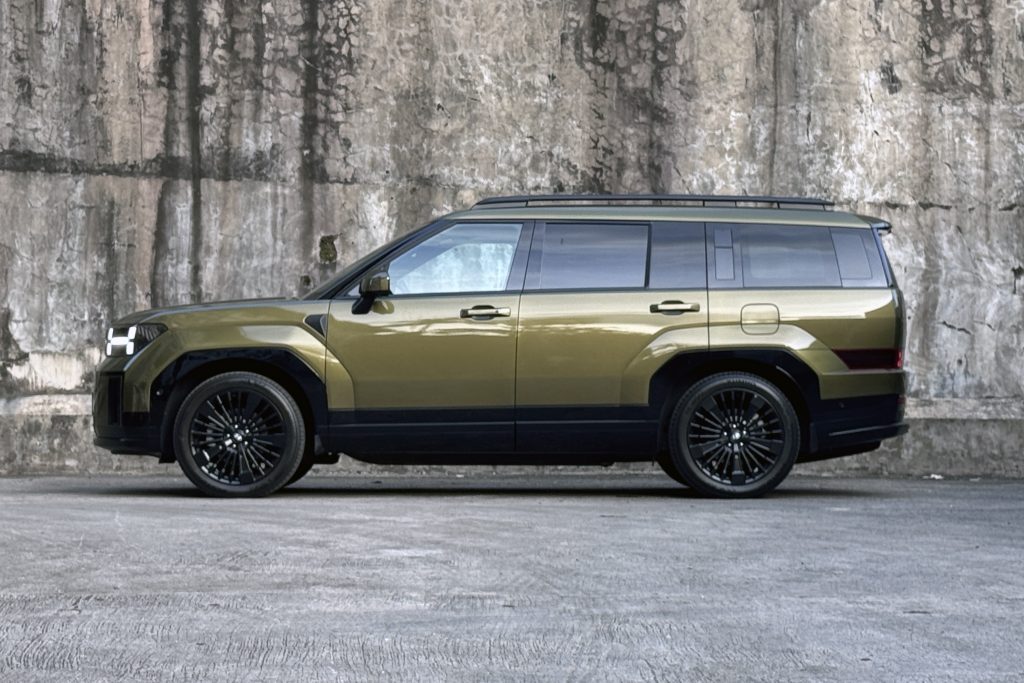
Overall, there’s not one particular aspect where the Hyundai Santa Fe Hybrid excels. However, the magic happens is when you add everything together. It consistently performs high on just about every aspect that elevates it to become one of the best mid-sized SUV offerings out there.
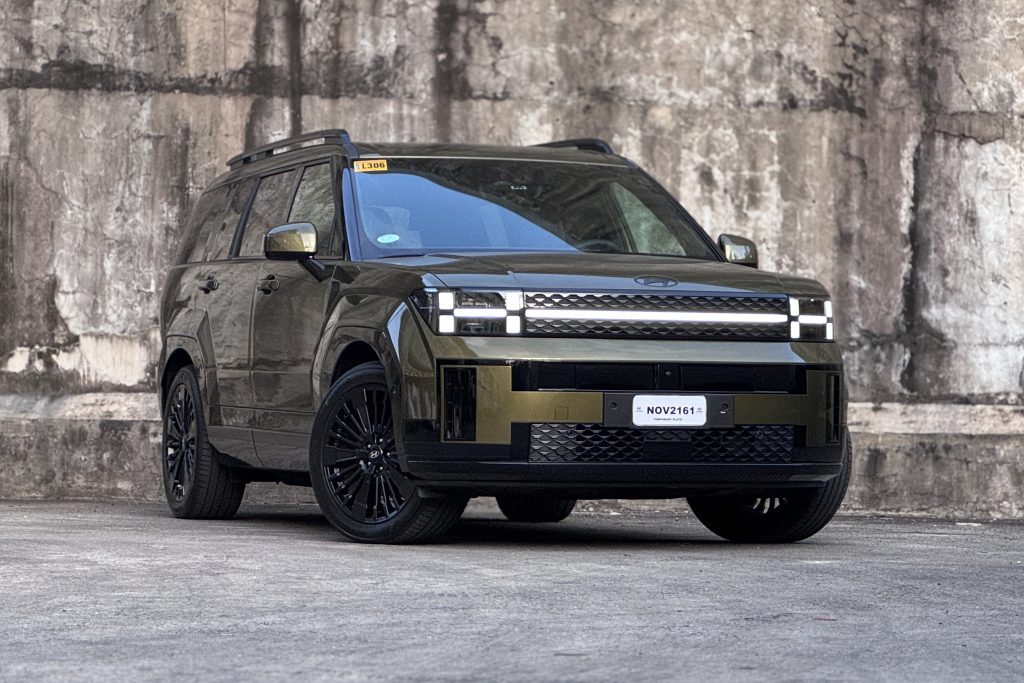
No doubt that the biggest draw to the Santa Fe is its class-leading interior. With its superb space set on a stylish, high-end feeling backdrop, it ticks all the boxes at what a family or even a company executive would be looking. Moreover, it has all the little touches that makes journeys better. But, on top of that, you have a nicely-packaged, well-styled mid-sized SUV that’s a solid drive to boot. Hyundai reckons Santa Fe buyers are those live an adventurous lifestyle, au contraire, it’s built for the adventure called life and it excels in that.

